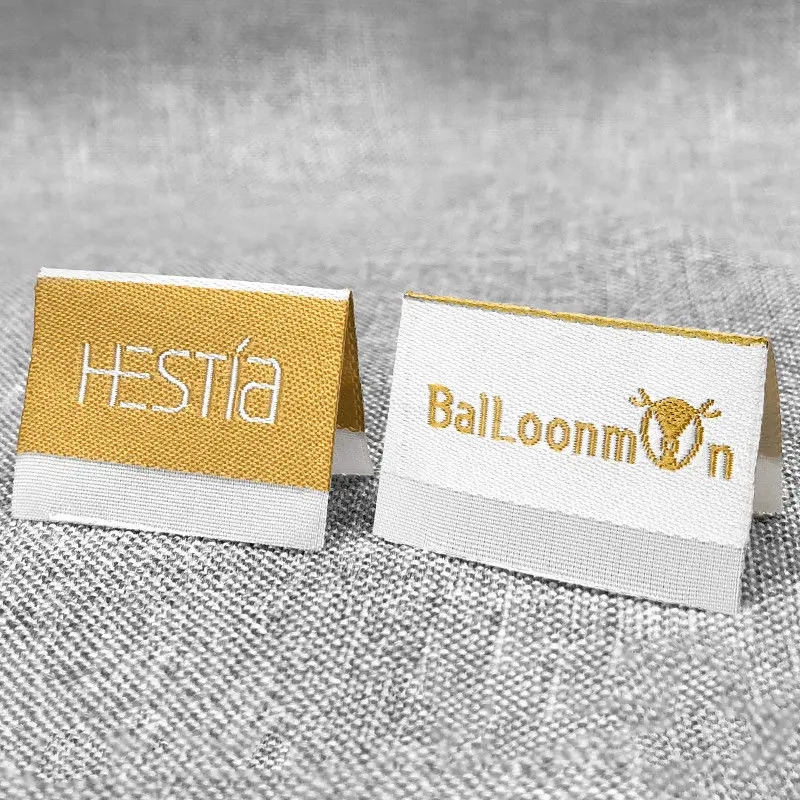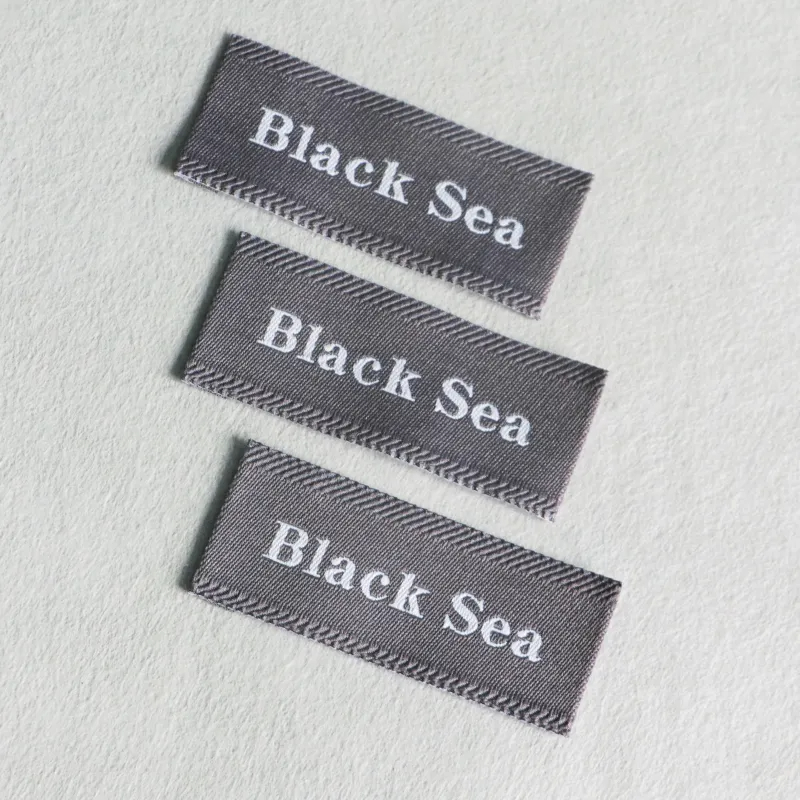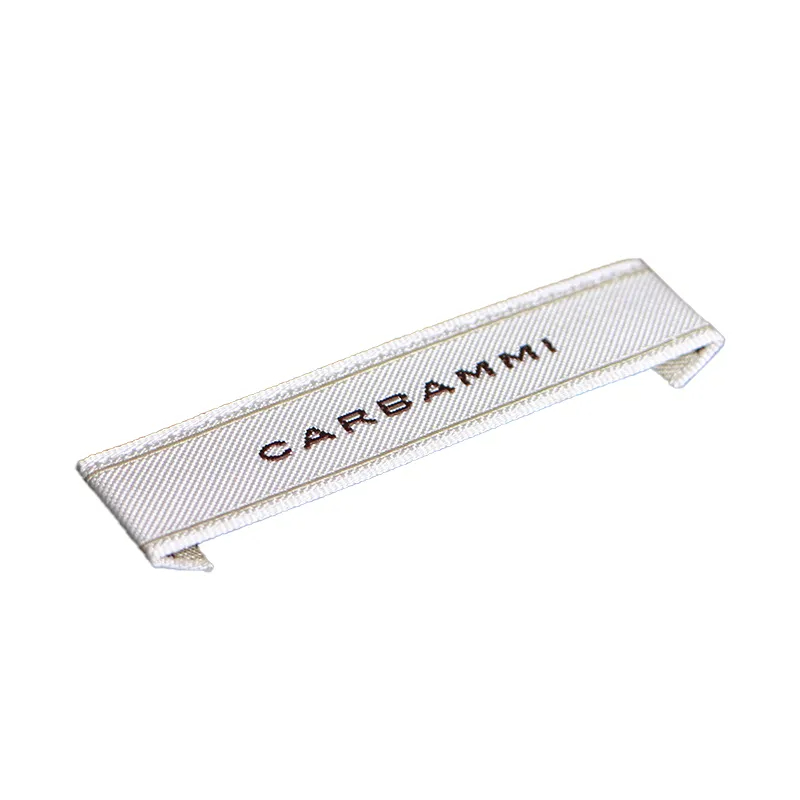
When it comes to branding your clothing line, one of the most important elements to consider is the type of clothing tags you use. Sew-in clothing tags are a durable and highly effective option that ensures your brand name, logo, or care instructions are clearly visible and long-lasting. Whether you're running a small business or a large fashion brand, sew-in tags offer a level of durability and quality that can elevate your products.

Why Choose Sew-In Clothing Tags?
Sew-in clothing tags are designed to be stitched directly into the fabric of your garment. Unlike other types of tags that may be attached with adhesive or ironed on, sew-in tags are securely attached and won’t easily wear out over time. This makes them the perfect solution for items that undergo frequent washing or rough handling, such as activewear, outerwear, or high-end fashion.
Here are several reasons why sew-in clothing tags stand out:
1.Durability: Sew-in tags are known for their longevity. Because they are stitched into the garment, they can withstand repeated washing, drying, and wear without peeling off or fading.
2.Professional Appearance: These tags provide a clean, polished look that reinforces the professionalism of your brand. The stitches holding the tag in place add an extra level of detail and sophistication.
3.Versatility: Sew-in clothing tags can be used on a wide range of fabrics, from lightweight cotton to heavy denim. This makes them suitable for a variety of clothing types, including t-shirts, jackets, and even bags.
4.Customization: Sew-in tags can be easily customized in terms of size, shape, and design. You can choose from various materials such as woven labels, satin labels, and cotton labels, each offering a distinct feel and appearance for your clothing.
How to Design Custom Sew-In Clothing Tags
Designing your sew-in clothing tags is an exciting step in building your brand identity. Here's how you can create tags that best reflect your brand:
1.Choose the Material: Different materials affect the look, feel, and durability of your tags. Satin tags offer a soft touch and are ideal for luxury garments, while woven labels are more durable and work well with casual wear or outerwear.
2.Select the Size: Sew-in tags come in various sizes to suit your needs. Smaller tags can work well for minimalistic designs, while larger tags may provide more space for detailed logos or care instructions.
3.Design the Layout: Include important information such as your brand name, logo, size, and care instructions. It's essential to keep your design clean and readable, so it’s best to avoid clutter.
4.Consider Placement: The location of your sew-in tag matters. Most commonly, they are sewn into the neck or side seam of garments, but you can place them wherever it best suits the design of your clothing.

How to Attach Sew-In Clothing Tags
Attaching sew-in clothing tags is relatively simple but requires attention to detail to ensure the tag stays securely in place. Here's a quick guide on how to attach a sew-in clothing tag:
1.Pin the Tag: Position the tag in your desired location on the garment. Make sure it's aligned properly for a neat and professional appearance.
2.Sew the Tag: Using a sewing machine or hand-stitching, sew along the edges of the tag to ensure it stays in place. A straight stitch or zig-zag stitch works well for most types of tags.
3.Check for Durability: After attaching the tag, inspect it to make sure it is secure. The tag should not be able to be easily pulled off.
Benefits of Sew-In Tags Over Other Labeling Methods
While iron-on and adhesive tags are also available, they are often less durable than sew-in tags. Here’s why sew-in tags are a better option for long-lasting clothing labels:
No Risk of Peeling: Iron-on tags can peel off after several washes, while sew-in tags remain securely attached to the garment.
Resistant to Heat: Sew-in tags are not affected by the heat from irons or dryers, making them ideal for clothes that need frequent care.
Soft Feel: Many sew-in labels, especially satin and cotton varieties, offer a softer feel on the skin, making them more comfortable for the wearer compared to plastic or other materials used in iron-on tags.

Conclusion
Sew-in clothing tags are an excellent choice for brands looking for a durable, professional, and customizable solution for labeling their apparel. They offer long-lasting durability, aesthetic appeal, and a secure attachment that other label types simply can’t match. Whether you’re creating luxury fashion or casual clothing, sew-in tags ensure that your brand stands out and lasts, making them a worthy investment for any clothing line.
If you’re ready to add sew-in tags to your garments, consider working with a professional supplier who can help you design and produce labels that align with your brand’s vision.
